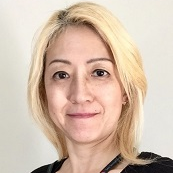In-Situ Forming and Self-Healing Hydrogels
A special issue of Polymers (ISSN 2073-4360). This special issue belongs to the section "Polymer Applications".
Deadline for manuscript submissions: closed (31 August 2020) | Viewed by 29443
Special Issue Editors
Interests: biodegradable polymers; block copolymers; micelles; hydrogels; drug delivery systems; tissue regeneration; nanostructures; membranes; 3D printing
Special Issues, Collections and Topics in MDPI journals
Interests: macromolecular chemistry; supramolecular science; metallic catalyzed polymerization; host-guest chemistry; self-healing materials
Special Issue Information
Dear Colleagues,
In situ forming and self-healing hydrogels have drawn increasing interest for their broad applications. For example, in situ thermo-gelling materials can be injected into a body without surgery, and photoreactive solutions can be used as a bioink for stereolithography 3D printing. Self-healing hydrogels mimic the healing of tissues, recovering structural damages, and functions after being ruptured. Both forming and healing of these hydrogels can be achieved through chemical crosslinking (coupling reaction, coordination bond, oxidation-reduction, cleavable bond, etc.) and/or physical interactions (hydrophobic, electrostatic, host-guest interactions, hydrogen bonding, etc.). Many of such systems also respond to a variety of stimuli such as temperature, light, pH, biomolecules, and chemicals.
This Special Issue will overview recent development on in situ forming and self-healing hydrogels with a wide range of research focuses such as design, synthesis, structures, functions, mechanisms, and applications. Both original articles and reviews are welcome.
Prof. Tomoko Fujiwara
Prof. Yoshinori Takashima
Guest Editors
Manuscript Submission Information
Manuscripts should be submitted online at www.mdpi.com by registering and logging in to this website. Once you are registered, click here to go to the submission form. Manuscripts can be submitted until the deadline. All submissions that pass pre-check are peer-reviewed. Accepted papers will be published continuously in the journal (as soon as accepted) and will be listed together on the special issue website. Research articles, review articles as well as short communications are invited. For planned papers, a title and short abstract (about 100 words) can be sent to the Editorial Office for announcement on this website.
Submitted manuscripts should not have been published previously, nor be under consideration for publication elsewhere (except conference proceedings papers). All manuscripts are thoroughly refereed through a single-blind peer-review process. A guide for authors and other relevant information for submission of manuscripts is available on the Instructions for Authors page. Polymers is an international peer-reviewed open access semimonthly journal published by MDPI.
Please visit the Instructions for Authors page before submitting a manuscript. The Article Processing Charge (APC) for publication in this open access journal is 2700 CHF (Swiss Francs). Submitted papers should be well formatted and use good English. Authors may use MDPI's English editing service prior to publication or during author revisions.
Keywords
- In situ forming hydrogels
- Self-healing hydrogels
- Stimuli-responsive hydrogels
- Synthesis and functionalization
- Chemical bonding
- Physical interaction
- Mechanisms
- Host-guest chemistry
- Self-assembly
- Drug delivery
- Injectable implants
- 3D printing







